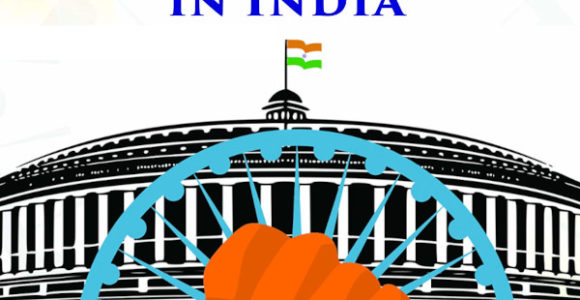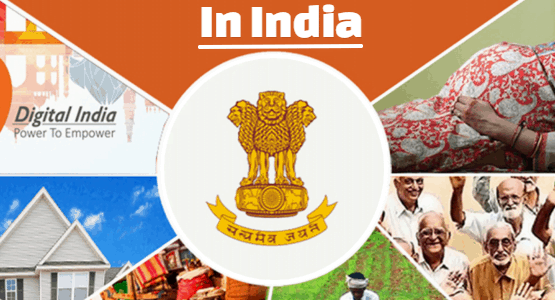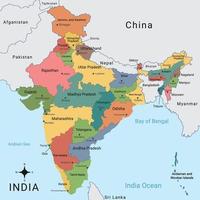Sardar Vallabhbhai Patel
| Full Name | Vallabhbhai Jhaverbhai Patel |
| Date of Birth | October 31, 1875 |
| Place of Birth | Nadiad, Gujarat, India |
| Father’s Name | Jhaverbhai Patel |
| Mother’s Name | Ladbai Patel |
| Spouse | Jhaverba Patel |
| Children | Dahyabhai Patel (Son), Maniben Patel (Daughter) |
| Education | Law, Inner Temple, London |
| Profession | Lawyer, Politician, Statesman |
| Key Role | First Deputy Prime Minister & Home Minister of India |
| Date of Death | December 15, 1950 |
| Place of Death | Mumbai, Maharashtra, India |
| Awards | Bharat Ratna (Posthumous), Statue of Unity |

Introduction
Sardar Vallabhbhai Patel, often referred to as the “Iron Man of India,” is celebrated as one of the most influential leaders of India’s independence movement. He was born on October 31, 1875, in the small town of Nadiad in Gujarat. Patel’s role in shaping post-independence India, especially in terms of uniting over 562 princely states into the Indian Union, has earned him a permanent place in the history of the nation. As the first Deputy Prime Minister and Home Minister of independent India, he was instrumental in fostering national unity and stability after independence.
Childhood & Early Life:
- Birth and Family:
Sardar Patel was born into a modest family of farmers in Nadiad, Gujarat, to Jhaverbhai Patel and Ladbai Patel. He had a simple childhood and was raised in an environment that instilled values of self-discipline, honesty, and hard work. - Education:
Initially, Patel studied at the village school in Nadiad, where his family could not afford formal education, so he taught himself. He later went to Ahmedabad for further schooling, and after completing his matriculation, he decided to pursue law.
Despite being reluctant to take up law as a profession initially, Patel went to England in 1893, at the age of 18, to study at the Inner Temple in London, where he earned his law degree and became a barrister. - Early Career:
After returning to India in 1913, Patel started his legal practice in Ahmedabad. He quickly became a successful lawyer due to his sharp legal acumen, honesty, and integrity. His career as a lawyer gave him the reputation of being a formidable force, which would later contribute to his effectiveness in politics.
Political Career:
- Entry into Politics:
Sardar Patel’s entry into politics began in the early 1900s when he joined the Indian National Congress (INC). Initially, Patel focused on local issues, dealing with taxes and problems faced by farmers. His early involvement in political activities helped him build a strong grassroots network. - Kheda Satyagraha (1918):
In 1918, Patel led the Kheda Satyagraha, where farmers in Kheda district, Gujarat, were protesting against the British-imposed land revenue taxes. Due to a famine and plague, the farmers were struggling to pay their dues. Patel led a successful non-violent movement, which resulted in the British agreeing to reduce the taxes, and this earned him his first major political victory and recognition. - Bardoli Satyagraha (1928):
Another significant moment in Patel’s political journey came when he led the Bardoli Satyagraha. The British government had raised the land revenue assessment, which led to widespread protests among the farmers of Bardoli (a region in Gujarat). Patel took the reins of the agitation and organized the farmers under the banner of non-violent resistance. The British government eventually reversed their decision, and this victory earned Patel the title of “Sardar”, which means “leader” or “chief.” - Role in the Non-Cooperation Movement and Civil Disobedience:
Sardar Patel was an active participant in the Non-Cooperation Movement led by Mahatma Gandhi, which aimed at promoting swadeshi goods and non-cooperation with the British government. He was also involved in the Salt March (1930), led by Gandhi, which was a direct challenge to British colonial rule. - Imprisonment and Leadership:
Patel was imprisoned several times during the freedom struggle, especially during the Quit India Movement in 1942, which demanded an immediate end to British rule in India. Despite his imprisonment, Patel remained a prominent figure and gained respect for his determination and leadership. - Post-Independence Role:
After India gained independence in 1947, Patel was appointed as the first Deputy Prime Minister and Home Minister of India. In his role, he worked tirelessly to integrate the princely states into the Indian Union, which was one of the most significant challenges after independence.His efforts led to the peaceful integration of states such as Hyderabad, Jammu and Kashmir, Junagadh, and Patiala, among others. Patel’s pragmatic approach, along with his firm stance, helped avoid potential conflicts that could have divided the new nation. This successful unification earned him the title of the “Iron Man of India.”
Major Works:
- Integration of Princely States:
The unification of India into one cohesive nation was one of Patel’s most remarkable accomplishments. He was able to persuade more than 560 princely states to accede to India, thereby laying the foundation for the country’s political unity. His negotiations were done with a combination of diplomacy, firmness, and wisdom. - Contributions to the Constitution of India:
Patel played a vital role in the framing of the Indian Constitution. He was a member of the Constituent Assembly, where he worked alongside other leaders to create a democratic and inclusive framework for independent India. - Nation-Building:
As the Home Minister, Patel was deeply involved in national security and the administration of the newly formed government. He worked to ensure law and order, and his contributions to strengthening India’s federal structure have been highly praised. - Kashmir Issue:
One of the most difficult tasks Patel faced was dealing with the Kashmir issue. Following the partition of India, the princely state of Jammu and Kashmir, led by Maharaja Hari Singh, was reluctant to accede to India. Patel played a crucial role in negotiating with the Maharaja, and under his leadership, the state eventually acceded to India.
Awards & Achievements:
- Bharat Ratna:
Sardar Patel was posthumously awarded the Bharat Ratna, India’s highest civilian honor, in 1991, in recognition of his pivotal role in the country’s independence and integration. - Statue of Unity:
To honor Sardar Patel’s contribution to India’s unity, the Statue of Unity was inaugurated on his birth anniversary, October 31, 2018, in Gujarat. Standing at 182 meters, it is the tallest statue in the world. - International Recognition:
Patel’s legacy is celebrated not just in India but globally. He is remembered as one of the key architects of India’s independence and post-independence nation-building.
Personal Life & Legacy:
- Family and Marriage:
Sardar Patel was married to Jhaverba Patel. They had two children: a son, Dahyabhai, and a daughter, Maniben. Despite his busy political career, Patel’s family life remained modest, and he was known to be a simple, disciplined man. - Personality and Traits:
Patel was known for his decisiveness, courage, and pragmatic approach to solving problems. He was also deeply committed to the welfare of the common people. His leadership was marked by a blend of diplomacy, toughness, and a strong moral compass. - Legacy:
Sardar Patel’s contributions to India’s freedom struggle and his role in uniting the country after independence have made him an enduring symbol of strength, resilience, and national unity. His legacy is celebrated every year on his birth anniversary, October 31, which is observed as National Unity Day.
Trivia:
- Statue of Unity: The Statue of Unity is not just a tribute to Patel’s leadership but also serves as a reminder of the importance of national unity. It stands as an engineering marvel and a beacon of Patel’s vision for a unified India.
- Title of ‘Sardar’: Patel was given the title of “Sardar” (meaning leader) by the people of Bardoli during the Bardoli Satyagraha in 1928, which was a defining moment in his political career.
- Relationship with Mahatma Gandhi: Patel shared a close relationship with Mahatma Gandhi, though their styles differed. Gandhi emphasized non-violence, while Patel was more focused on practical solutions. Despite their differences, Patel remained one of Gandhi’s closest allies during the freedom struggle.
Key Terms:
- Bharat Ratna ,
- first Deputy Prime Minister of India ,
- Indian freedom struggle ,
- Indian History ,
- Indian Home Minister ,
- Indian independence leader ,
- Indian leaders ,
- Indian political leaders ,
- integration of princely states ,
- Iron Man legacy ,
- Iron Man of India ,
- leader of India ,
- National Unity Day ,
- Patel's contributions to India ,
- Patel's legacy ,
- Sardar Patel achievements ,
- Sardar Patel childhood ,
- Sardar Patel major works ,
- Sardar Patel political career ,
- Sardar Vallabhbhai Patel ,
- Statue of Unity ,
- unification of India ,
- Vallabhbhai Patel biography
Disclaimer: The information provided here has been compiled from various sources to the best of our knowledge. While every effort has been made to ensure the accuracy of the details, there may be occasional errors or omissions. If you find any discrepancies or incorrect information, kindly inform us so we can make the necessary corrections. Thank you for your understanding and cooperation.





